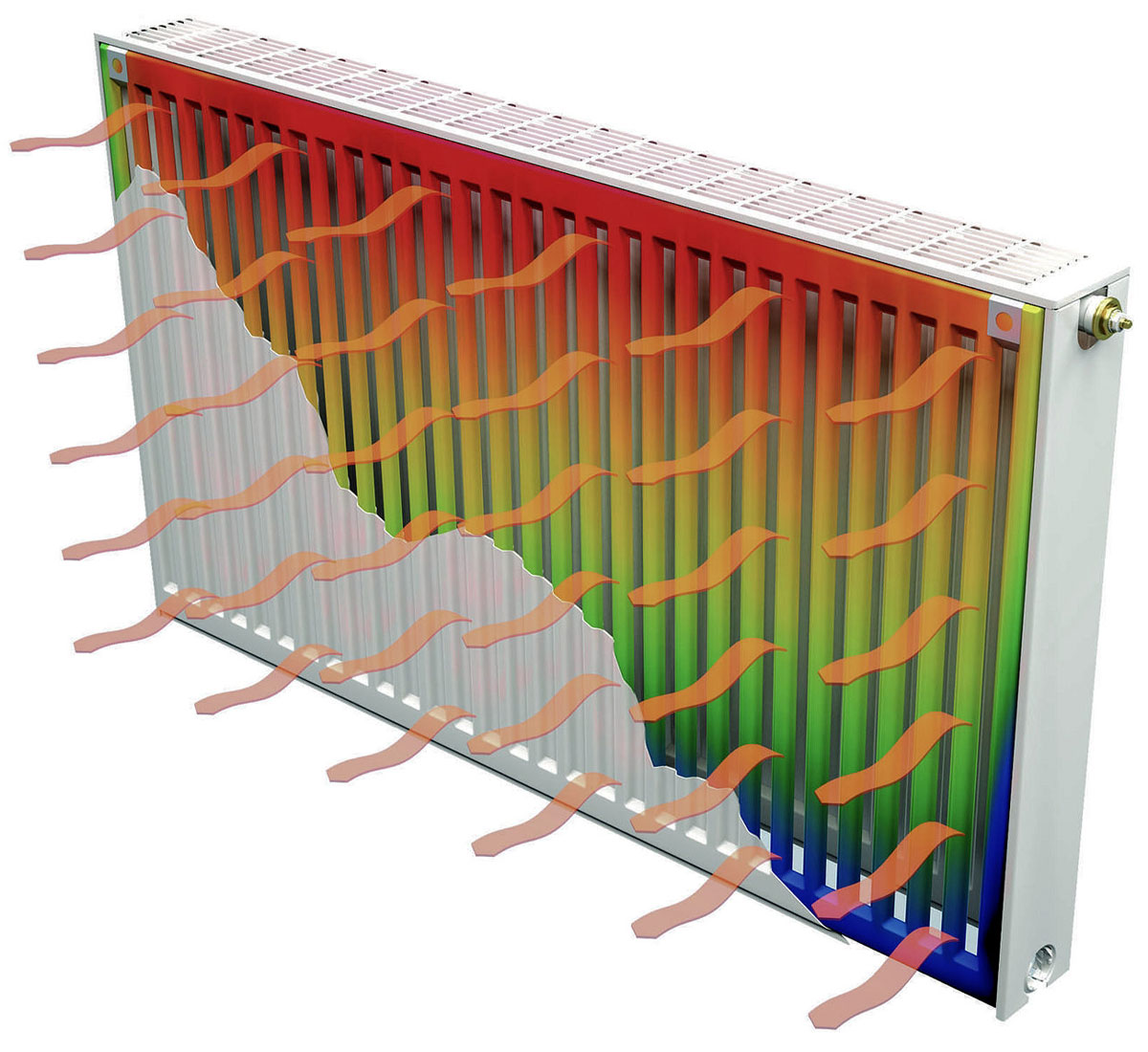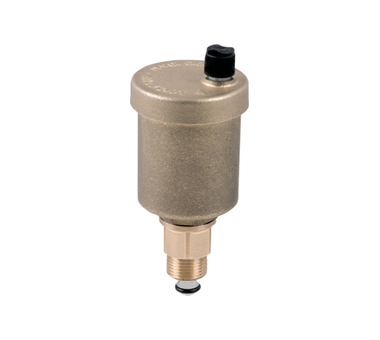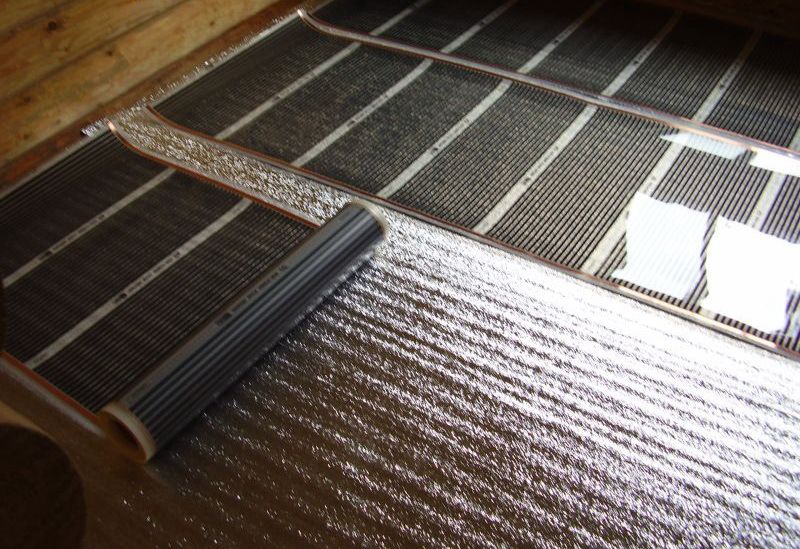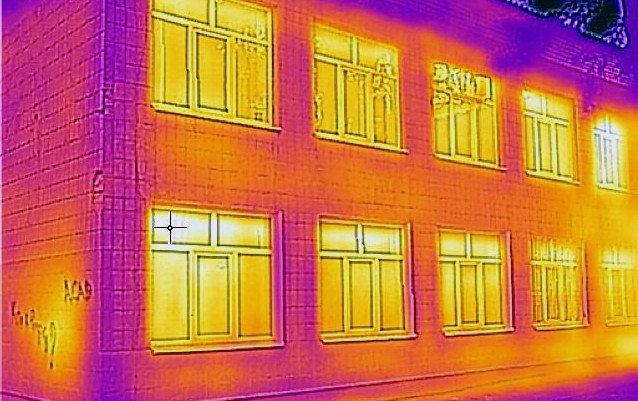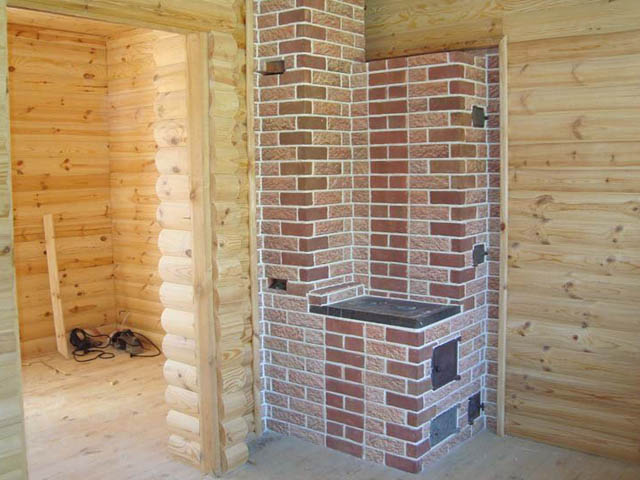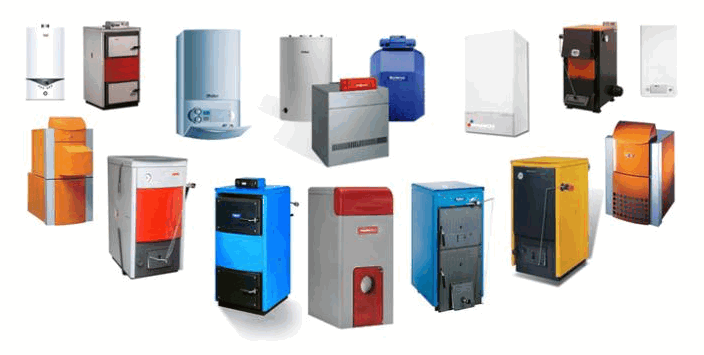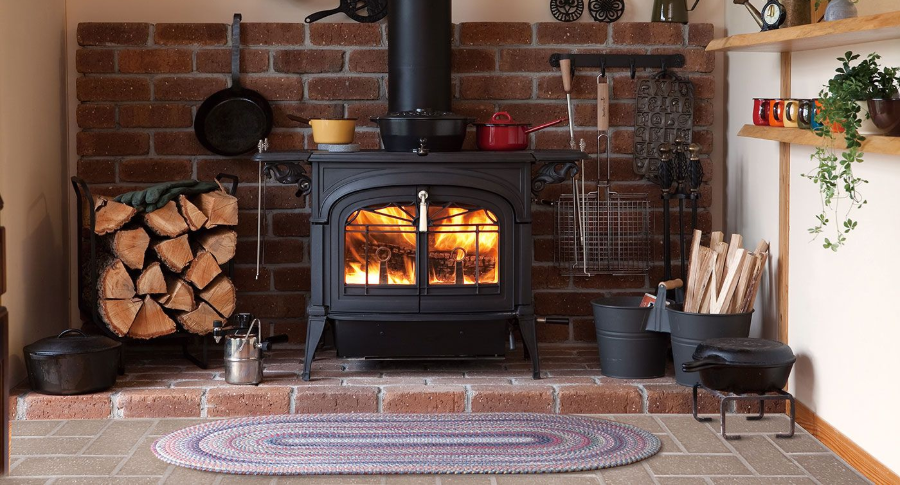If the kitchen has a small area, the placement of furniture and household appliances in it can be a big problem. It is especially difficult to find a place for bulky objects that have no place in the nursery, bedroom and on the balcony. Many people put the refrigerator next to the heating battery, without being interested in the consequences of such a decision. In order not to create major financial troubles for yourself, you should familiarize yourself with the general arrangement of freezing equipment, the rules for its placement and operation.
Consequences of placing the refrigerator next to the battery
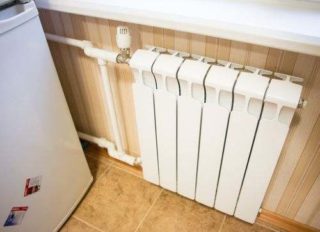
The refrigerator is a large insulated cabinet, inside of which refrigerant runs through the tubes, due to which the food is frozen. On the rear panel there is a radiator and a compressor, which is responsible for cooling the liquid carrier. The motor is located in the tank and cools down due to the constant flow of liquid from the inner chamber. To prevent the working bodies from overheating, there is a technological gap between the rear wall of the refrigerator and the adjacent surface, which is 8-10 cm for different models.
If you install the refrigerator near a battery, the consequences can be as follows:
- The compressor will run continuously as it will heat up from the radiator. Hot air prevents the motor from cooling, causing it to burn.
- The heat sink will not be able to remove the heat generated by the equipment. To reach the set temperature in the chamber, the engine will operate at full load, which will lead to increased power consumption.
- Since the batteries are installed in a niche under the window, there will be problems with access to its sashes. In addition, part of the window opening will be closed, which will make the room darker. This will also negatively affect the interior, where the window sill, curtains and street landscape play an important role.
- Lowering the air temperature in the kitchen. Since the refrigerator blocks some or all of the battery, its heat will be blocked and heated air will rise to the ceiling.
- Ice formation in the freezer. This happens when the equipment is located with the side wall to the heater. The result is damage to products and the loss of their presentation. The freezer will need to be cleaned more frequently as the ice mass will deform the tubes.
The idea of installing a refrigerator near a battery is a losing one in every respect. Expensive equipment can become unusable literally in a matter of days. Free repairs under warranty will be denied, since all manufacturers in the operating instructions indicate the inadmissibility of placing refrigerators near heating devices.
Placement conditions and required distance
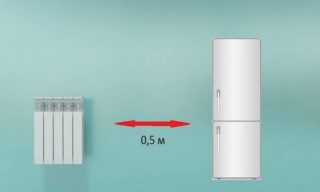
The user manual states that the minimum distance from the refrigerator to the battery should be at least 50 cm. This applies not only to heating radiators and piping. A kitchen stove is also equated with heaters. When cooking or heating food, it emits a large amount of heat energy, which spreads out to the sides, reflected from the bottom of the cookware. Because of this, the side walls of the unit are heated.Let there be no tubes with freon, but heat is transferred to the chamber, which is why the relay is triggered more often, the electricity consumption increases and the wear of the equipment accelerates.
Don't forget about the sun. It can heat the refrigerator much more than all household appliances put together. Based on this, you need to place the freezer so that as little sunlight as possible falls on it.
When choosing a place to install the refrigerator, you should adhere to the following rules:
- Do not place appliances close to walls or furniture. It is necessary to use the restraints that the manufacturer puts in the packing box. Clearance is necessary for the flow of cold air to the radiator and compressor block.
- Raise the machine as high as possible above the floor. The adjustable legs are used for this. Thanks to this, the ventilation of the heated parts will be more efficient, water will not get on the bottom during wet cleaning in the kitchen or when leaks occur.
- If you cannot maintain the distance between the refrigerator and the battery recommended by the instructions, you need to use thermal insulation materials. The simplest option is drywall or thin foam. It is even better to use roll or tile insulation made of foamed polyethylene. It is an environmentally friendly material with low thermal conductivity and no harmful emissions when heated.
- Do not place electrical elements of the "warm floor" system in the place where the refrigerator is planned to be installed. It is equally harmful for both products. They will overheat greatly, leading to breakdown and costly repairs.
A radical solution to the problem is to disconnect the battery or insulate it with a heat-insulating material that completely absorbs the released energy. In this case, another question will have to be solved: how to heat the kitchen. It is not difficult to get out of the situation, since modern industry produces many models of compact household heaters of wall, floor and even ceiling type. These are additional costs, but they are much less than the regular purchase of new refrigerators to replace the burnt ones.
Correct location in the kitchen
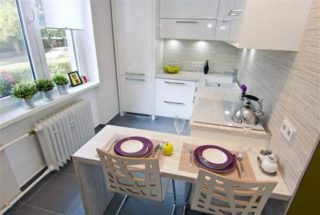
There are many furniture companies that are ready to make a custom-made kitchenette in accordance with any customer's requirements. When it comes to arranging a small room, it makes sense to use the services of a designer. The specialist uses computer programs to solve even complex planning problems. With the right approach, there is a place for everything: refrigerator, stove, dishwasher, table, cabinets and cabinets.
The following options for placing freezing equipment in the kitchen are considered optimal:
- In one of the corners from the side of the window. There, the equipment will be protected from direct sunlight and exposure to warm air when ventilated in the summer. As for the proximity of the heating radiator, the issue is easily solved by installing a decorative partition or pasting the side of the device with heat-insulating material, followed by decorating with adhesive film.
- Against the wall next to the front door. This is the ideal position for the refrigerator. There will be no objects on either side of it, so that air access to the radiator and compressor is not blocked. The dining table can be moved to the window, and chairs that slide under the table can be used instead of benches.
- In the corner opposite the window. This is a good decision not only from a technical point of view, but also in terms of planning the headset configuration. The side of the unit will become the starting plane from which the dimensions of cabinets, pedestals, sinks and apron will be calculated.
Get creative with your refrigerator, even in a small kitchen. You can find a place for technology yourself.To do this, use cut-to-scale paper templates.
Installation alternatives
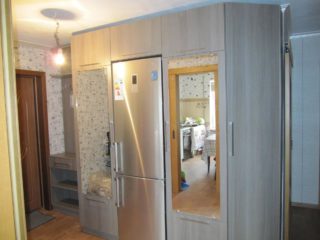
If all the options have been tried and the free area remains only next to the battery, you should not run into this version. It gives only a temporary way out of the situation, sooner or later it will have to be abandoned. The reason for the refusal will not be the most pleasant, as it will be expressed in the breakdown of the refrigerator. It is better not to take circumstances to such an extreme, but to initially find an alternative solution.
- Adjacent pantry. If the unit does not fit completely into it, it is enough to remove the door, and seal the remaining gaps with false panels.
- Living room. If the room is not used as a living room, the sound of a running compressor will not disturb anyone. Wrapping or decorative painting will help to adapt the refrigerator to the interior.
- Corridor. With a sufficiently large area of the room, the unit will not interfere with the free passage of people. Better yet, hide it in a wardrobe, not forgetting about natural or forced ventilation.
- Insulated loggia (not a balcony). By virtue of their design, these rooms are designed for heavy loads. The main thing is that the temperature in the loggia does not drop below + 5 ° C.
The choice of places for installing the refrigerator is quite extensive. Priorities are created individually based on the conditions of each apartment.

